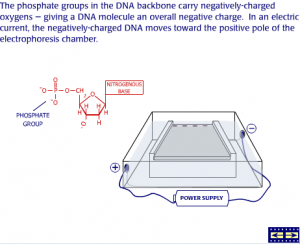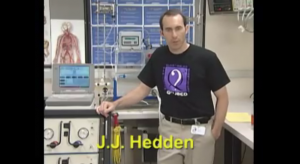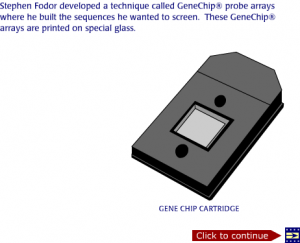This animation gives all information about antimicrobial resistance. Resistance of bacteria towards antibiotics is a major hurdle in treating infectious diseases. It basically means that the bacteria become resistant or stronger against the antimicrobial agent and therefore do not die when treated with the antibiotic drug. This animation highlights the mechanisms of antibiotic resistance such as:
- Mutation
- Destruction or Inactivation
- Efflux
It also explains the ways in which resistance of bacteria towards antimicrobials can be transferred from one microorganism to another microorganism by genetic transfer using:
- Conjugation
- Transformation
- Transduction
Note – This video was uploaded on YouTube by slowdragon2003 and is actually produced by the FDA for free distribution. The original video can be found here : Animation of Antimicrobial Resistance
The transcript of the video is below:
"INTRODUCTION Antimicrobial agents represent one of the main therapeutic tools both in human and veterinary medicine to control and treat a variety of bacterial infectious diseases. However, during the past five decades, the use and sometimes misuse of antimicrobials in both human and veterinary medicine has resulted in the emergence of strains of bacteria that no longer respond to antimicrobial therapy. Not only do antimicrobial-resistant bacterial pathogens in animals pose a risk in terms of animal health, they also affect public health when transmitted to humans as foodborne contaminants. Thus, addressing the issue of antimicrobial resistance is one of the most urgent priorities in the fields of public health today. The following animation will help illustrate several mechanisms where bacteria develop resistance to antimicrobial agents and then transfer this resistance to susceptible bacterial strains. Selection Pressure The increased prevalence and dissemination of resistance is an outcome of natural selection and should be viewed as an expected phenomenon of the Darwinian biological principle of “survival of the fittest.” In any large population of bacteria, a few cells will be present which possess traits that enable them to survive in the presence of a noxious substance, in this case the ability to fend off the action of the antimicrobial. Susceptible organisms, those lacking the advantageous trait, will be eliminated, leaving the remaining resistant populations behind. With long-term antimicrobial use in a given environment, the bacterial communities will change dramatically, with more resistant organisms increasing in proportion. This can result in a situation where the next time an antimicrobial is needed, it may not be effective to treat what was once an easily treatable infection. Mechanisms of Antimicrobial Resistance Susceptible bacteria can acquire resistance to antimicrobials by either genetic mutation or by accepting antimicrobial resistant genes from other bacteria. This usually occurs through one of several biochemical mechanisms:
- Mutation
- Destruction or Inactivation
- And, Efflux
Mutation Mutation is a change in the DNA that can sometimes cause a change in the gene product, which is the target of the antimicrobial. When a susceptible bacterium comes into contact with a therapeutic concentration of antimicrobials, like fluroquinolones, the antimicrobial can bind to the specific enzymes, in this case, DNA gyrase. The DNA gyrase is an essential bacterial enzyme required for DNA replication. The end result is that fluoroquinolones block bacterial DNA replication leading to cell death. However, when spontaneous mutations occur in specific areas of the genes encoding these enzymes, antimicrobials no longer bind efficiently. This allows the bacterium to continue DNA replication. Destruction or Inactivation Many bacteria possess genes which produce enzymes that chemically degrade or deactivate the antimicrobial, rendering them ineffective against the bacterium. Here the antimicrobial is either degraded or modified by enzymatic activity before it can reach the target site and damage the bacterial cell. Efflux Certain bacteria can often become resistant to antimicrobials through a mechanism known as Efflux. An efflux pump is essentially a channel that actively exports antimicrobial and other compounds out of the cell. The antimicrobial enters the bacterium through a channel termed a porin, and then is pumped back out of the bacterium by the efflux pump. By actively pumping out antimicrobials, the efflux pumps prevent the intracellular accumulation necessary to exert their lethal activity inside the cell. Genetic Transfer Genetic material can be transferred between bacteria by several means, most often by:
- Conjugation
- Transformation
- And, Transduction
Conjugation Conjugation is mediated by a particular kind of circular DNA called a plasmid, which replicates independently of the chromosome. Many plasmids carry genes that confer resistance to antimicrobials. When two cells are in close proximity to each other, a hollow bridge-like structure, known as a pilus, forms between two cells. This allows a copy of the plasmid, as it is duplicated, to be transferred from one bacterium to another. This enables a susceptible bacteria to acquire resistance to a particular antimicrobial agent. Transformation During this process, genes are transferred from one bacterium to another as “naked” DNA. When cells die and break apart, DNA can be released into the surrounding environment. Other bacteria in close proximity can scavenge this free-floating DNA, and incorporate it into their own DNA. This DNA may contain advantageous genes, such as antimicrobial resistant genes and benefit the recipient cell. Transduction In this process, bacterial DNA is transferred from one bacterium to another inside a virus that infects bacteria. These viruses are called bacteriophages or phage. When a phage infects a bacterium, it essentially takes over the bacteria’s genetic processes to produce more phage. During this process, bacterial DNA may inadvertently be incorporated into the new phage DNA. Upon bacterial death and lysis (or breaking apart), these new phage go on to infect other bacteria. This brings along genes from the previously infected bacterium.“




requirements. Recognitions pro suggestion like operative, balanced, explanatory as well as moreover exuberance thinkings about this issue to Gloria. adeaakdadgfe
very nice post, i certainly love this web site, keep on it kegcgbkkdade
I just couldn’t go away your web site before suggesting that I really enjoyed the usual information an individual provide on your visitors? Is gonna be again continuously in order to check up on new posts kdbdddbeedkc
Wow that was odd. I just wrote an extremely long comment but after I clicked submit my comment didn’t show up. Grrrr well I’m not writing all that over again. Anyway, just wanted to say superb blog!